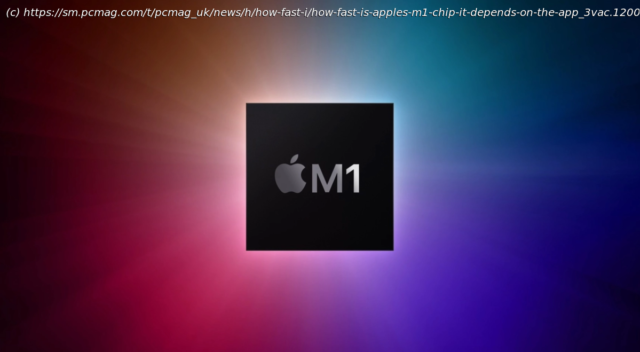Apple’s M1 CPU, debuting in its latest MacBooks and Mac mini, offers a groundbreaking blend of performance and efficiency…at least in theory. Should you bite? Let’s break down the early results.
The brand-new M1 processor available in Apple’s latest MacBook Pro, MacBook Air, and Mac mini offers a groundbreaking blend of performance and efficiency, at least in theory. Lightning-quick app launches, speedy video transcodes, and the potential for as much as 29 hours of battery life? Yes, please. But Apple’s M1 chip doesn’t live up to its full potential all of the time, at least not yet. Mac software has spent more than 15 years running on Intel x86 processors. And that means that a lot of apps that have been around for a while will need to be redesigned to take full advantage of the entirely new CPU architecture that the M1 uses. In some cases, these apps aren’t much faster on an M1 Mac than they are on an Intel Mac. This is because apps designed for Intel processors run in emulation mode on M1 processors, a situation akin to towing your car instead of driving it. This mode is called “Rosetta 2.” (The original Rosetta came into play during Apple’s ages-ago transition from PowerPC chips to Intel.) All of this complicates the decision of whether or not to upgrade to an M1 Mac from an older Intel one. And if you’re open to buying a Windows laptop, choosing between an M1 MacBook and a competitor like a late-model Dell XPS 13 is just as tricky, since Intel-powered Windows 10 PCs have no architecture-compatibility issues between their software and processors. So let’s take a look at some common computing scenarios to see how the M1 Mac improves (or doesn’t improve) performance. Basic Productivity Tasks: Apple M1 Aces These If you’re using a computer to browse the internet, answer email, and organize and edit photos, an M1 Mac will perform just fine. The reason why: On a Mac, many of these tasks are performed using apps that are part of macOS, and thus already run natively on the M1 chip. This everyday-use brigade includes the newly launched “Big Sur” version of the macOS operating system, as well as Apple apps like the Safari web browser, Preview, and the Pages word processing program. (Hit the link for lots more on Big Sur and the changes it brings to the macOS world.) Indeed, in our tests of the MacBook Pro, the MacBook Air, and the Mac mini, all equipped with the M1 chip, we encountered no significant sluggishness on basic computing tasks using Universal apps, which is Apple’s lingo for programs that run natively on the M1 processor. This is encouraging for many prospective M1 Mac owners, since nearly all of them will use their Macs to do these types of tasks at least some of the time. It’s also not necessarily a foregone conclusion. Previous transitions between processor architectures have not always proceeded smoothly. The current effort to translate Intel-native Windows apps to run on ARM-based processors like Qualcomm’s Snapdragons has resulted in PCs that are sometimes sluggish even when running apps that have already been converted. Apple has extensive experience managing silicon transitions, including the migration from PowerPC processors to Intel ones in the mid-2000s. It’s nice to see that M1 Macs aren’t at a disadvantage when it comes to basic, essential computing tasks. It’s difficult to quantify performance on basic computing tasks, but a few proprietary benchmarks out there run natively on the M1 processor and let us attempt to do it. One is Geekbench 5, which tests a processor’s single-core and multi-core power using a bevy of simulated tasks like checking email and playing music. Geekbench also measures how well a processor is able to handle the ever-increasing number of apps that use machine learning to speed up processing. The Geekbench 5 results suggest that M1-powered Macs are not only faster than their Intel predecessors when it comes to basic computing tasks, but also faster than Apple’s A-series chips for iPhones and iPads, as well as Intel’s latest 11th Generation “Tiger Lake” processors. You can see the Geekbench results on the first tab the chart below. The chart also includes results from three browser-based benchmarks.






